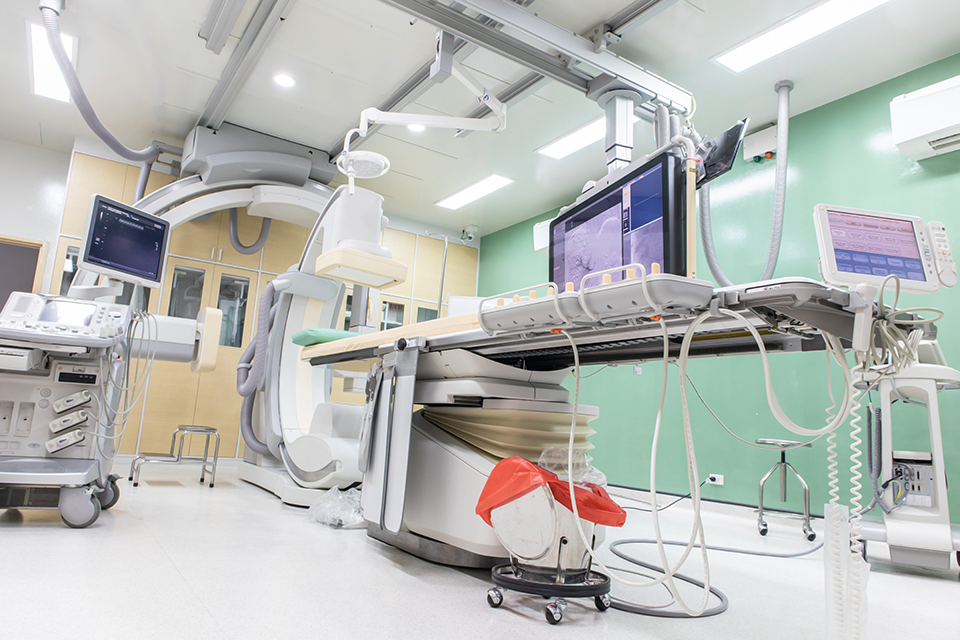IGT Challenges (and Solutions) for Hospital Administrators, Part 4: Justifying and Funding IGT
This is Part 4 in our series on IGT challenges and solutions for hospital administrators. Part 1 introduced the importance of image-guided therapy...
4 min read
Domico Med-Device August 22, 2023
This is Part 2 in a 4-part series on hospital administrator IGT challenges and solutions. Part 1 offered an overview of IGT in the modern hospital. In Part 2, we’ll discuss how hospitals can meet increasing demand for IGT procedures.
Image-guided therapy is in high demand from both caregivers and patients. Hospital administrators are tasked with meeting that demand, but it can prove challenging. The following lists four obstacles to meeting IGT demand and ways to overcome them.
Image-guided therapy isn’t a new concept. Caregivers have used imaging to guide therapy since the first clinical X-ray was taken in 1896. However, modern IGT is advancing at a rapid pace. Many hospital administrators seek the latest technology to remain competitive, but these technologies outpace buying cycles. Equipment goes outdated faster than they hope, and there is no guarantee that funding is available for replacements.
In one example, a hospital’s labs were aging, and even though they had purchased additional equipment over the years (such as an IVIS system, which was essentially an intracoronary ultrasound), their labs had exceeded their shelf life. However, the hospital hadn’t allocated capital funds for lab upgrades due to other, more pressing priorities.
In these scenarios, administrators often need to get creative to acquire new IGT equipment. They need to master their timing and make the ask when it’s most likely to be approved. They can also tap into outside funding. Read more about how to justify investment in IGT – and earn funding – in Part 4 of this series.
Though in high demand, many hospitals have limited time and space to accommodate IGT procedures. Hybrid ORs are gaining popularity, but you can’t outfit every lab with every type of equipment for every possible procedure.
There is always going to be a need for specialization based on budgets, available space, and procedure volume, which can create scheduling challenges when rooms are available yet too specialized to accommodate certain procedures.
One hospital administrator shared how such challenges manifest. Their department had five labs and they originally tried to design each to feature the same equipment and offer the same services, but it wasn’t practical. They couldn’t keep up with technology, and some procedures simply didn’t have a high enough volume to justify equipment purchases to outfit each lab. Ultimately, they decided to make two labs highly specialized with 3D mapping systems for heart ablations.
At the same time, an interventional suite that can perform multiple types of procedures can only be scheduled for a single patient at a time. Other equipment not specific to that procedure goes unused.

To meet these challenges, administrators can develop efficient scheduling policies and identify ways to increase IGT availability. For example, you can ensure scheduling staff understand what type of equipment is in each room. If one imaging suite can accommodate both cardiac and vascular procedures, but another can only accommodate cardiac procedures, schedulers can fill the cardiac-only suite first so the other suite is available if a caregiver needs to schedule a vascular procedure.
Other ideas include:
Redesigning underutilized labs and ORs to create specialized IGT suites tailored to specific procedures, maximizing efficiency and resources.
Strategically opening new procedure rooms and interventional suites equipped with the latest IGT technology to meet the growing demand for advanced procedures.
Repurposing multi-use spaces within the hospital and outfitting them with the most commonly used IGT equipment first, ensuring flexibility and accessibility for caregivers.
Investing in portable IGT equipment to enhance mobility and flexibility, allowing caregivers to bring cutting-edge technology directly to patients, reducing wait times and improving overall patient care.
 3. Caregiver adoption
3. Caregiver adoptionCaregiver confidence is paramount in the success of medical procedures and patient outcomes. When caregivers trust and are proficient in using new IGT technologies, they can provide more precise and effective care. While manufacturers often provide training for caregivers, the quality of this training can vary, impacting caregiver confidence.
It's crucial for caregivers to trust in the capabilities of IGT equipment to assist them in making informed decisions and executing procedures with accuracy. Without this trust, caregivers may be hesitant to incorporate new technologies into their practice.
An effective strategy, as recommended by administrators, is to empower caregivers to take the lead in adopting new technologies. Physicians, nurses, and other healthcare staff are often proactive in staying informed about emerging IGT technologies. They are more likely to embrace new ideas and innovations that can enhance their ability to deliver high-quality care efficiently.
By fostering a culture where caregivers are encouraged to drive technology adoption, hospitals can ensure that new IGT equipment is utilized effectively and that caregivers feel confident in their ability to leverage these advanced tools for the benefit of their patients.
As many hospital administrators are keenly aware, it’s often a race against competitors to be the first to offer a new type of procedure – an offering that’s typically available only through a new type of equipment.
Administrators should work with marketing teams to promote the benefits of specific procedures, not the machines that enable them. Patients don’t care that you have a world-class MRI machine and sophisticated 3D imaging software. They do care, however, that you can accurately diagnose them and perform minimally invasive procedures that allow patients to return home the same day.
Beating the competition depends on identifying and promoting differentiators that make hospitals attractive to patients:
A better patient experience via superior safety, comfort, and minimal interventional time
Improved healthcare outcomes afforded by superior technology and premium quality care
Reduced costs due to greater hospital efficiency and ROI
In conclusion, meeting the increasing demand for image-guided therapy in hospitals comes with its own set of challenges, from aging equipment to scheduling issues and caregiver adoption. However, by getting creative with funding, implementing efficient scheduling policies, empowering caregivers, and promoting unique patient benefits, hospitals can overcome these obstacles and stay ahead of the competition. To learn more about selecting the right IGT equipment, be sure to check out Part 3 of this series. Stay tuned for the next installment to delve deeper into this critical aspect of modern healthcare administration.
Read Part 3 of this series for insights into how to select the right IGT equipment.

This is Part 4 in our series on IGT challenges and solutions for hospital administrators. Part 1 introduced the importance of image-guided therapy...

This is Part 3 in a 5-part series about optimizing multi-procedure imaging systems. Part 1 offered an overview of the benefits. Part 2detailed how...

This is Part 3 in a 4-part series on hospital administrator IGT challenges and solutions. Part 1 offered an overview of IGT in the modern hospital.